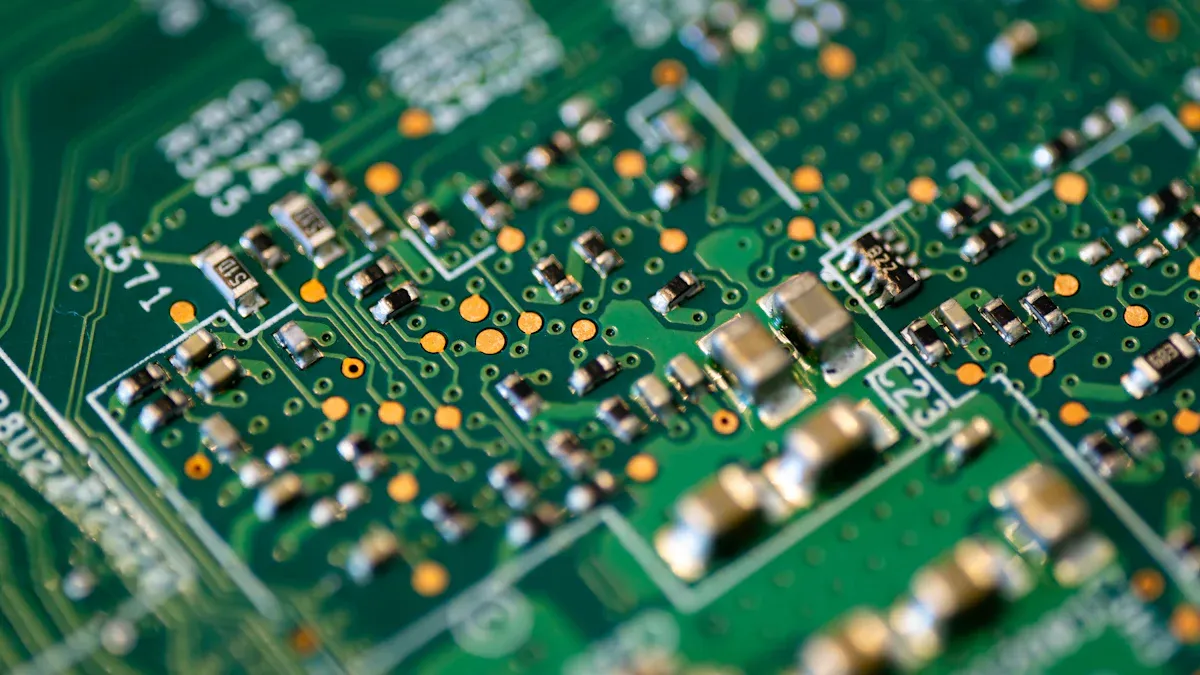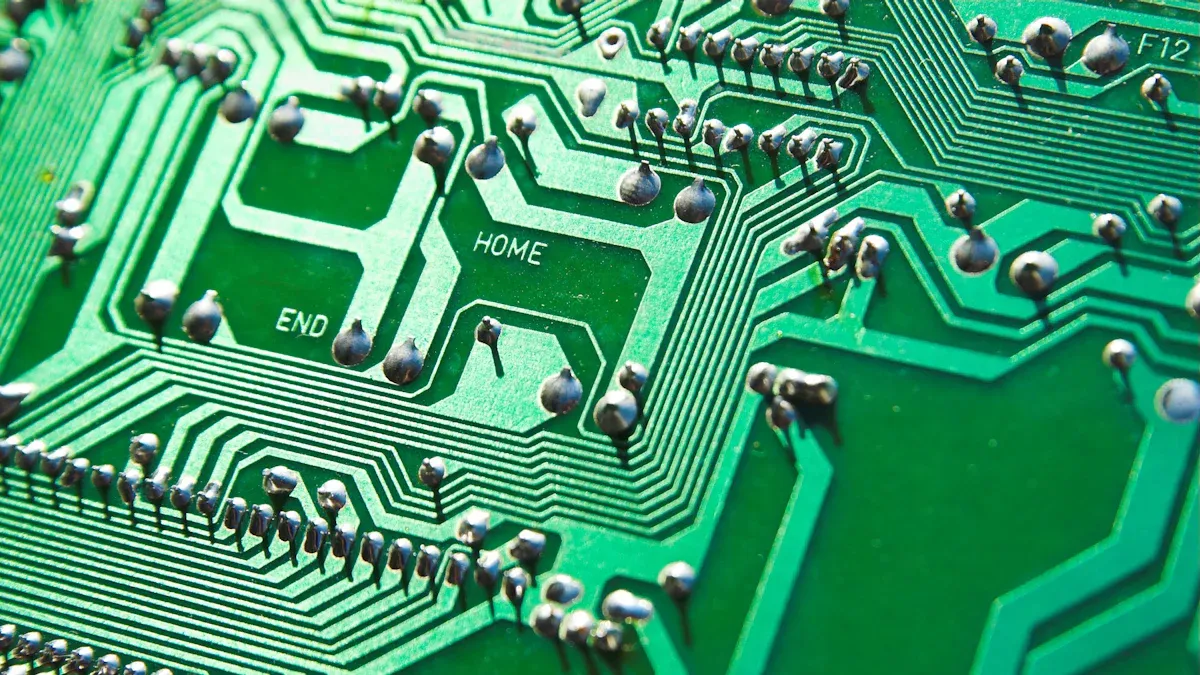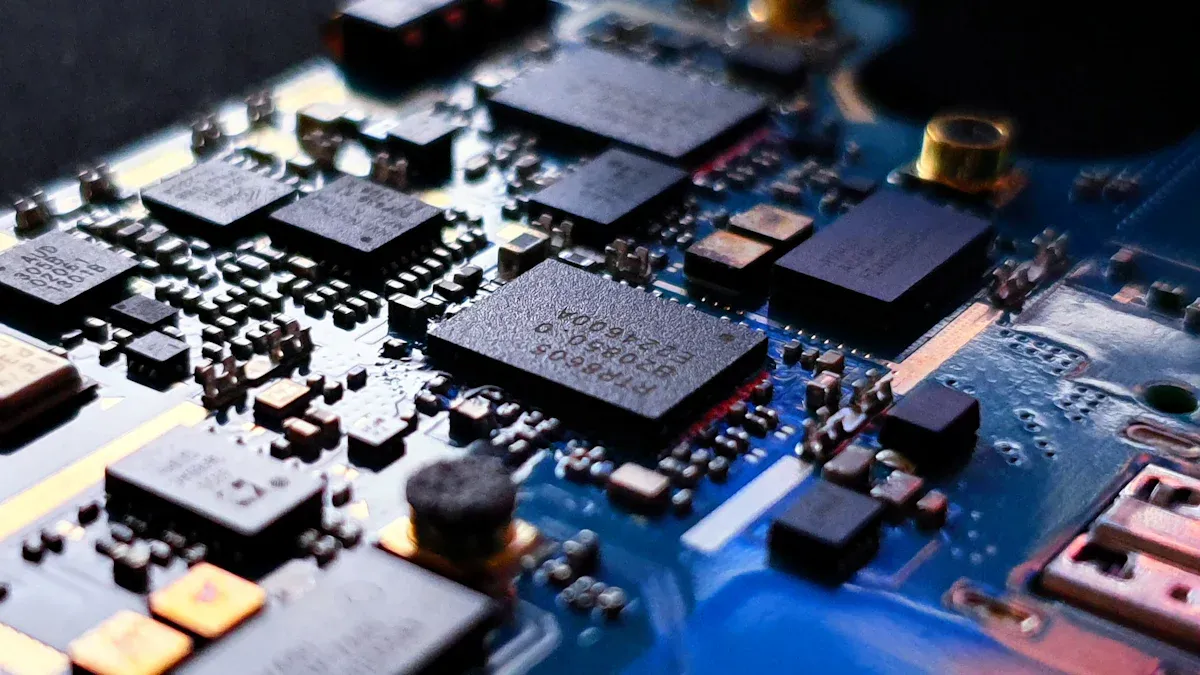Top 3 Synchronous Buck Converter Chip Picks for 2025

You want the best Synchronous Buck Converter chip for your next project. The Texas Instruments LM5166 gives you a wide input voltage range. The Monolithic Power Systems MP4572 offers high efficiency. The Renesas ISL80030A stands out with its compact design. These chips help you manage power with less heat and stable output, even when your input changes.
Key Takeaways
The Texas Instruments LM5166 suits projects needing a wide input voltage range and stable performance in industrial or IoT settings.
The Monolithic Power Systems MP4572 offers high efficiency and strong current output, ideal for consumer electronics and telecom devices.
The Renesas ISL80030A fits tight spaces with its ultra-compact size and supports high current, perfect for wearables and portable gadgets.
Choose a chip by matching your project’s voltage, current, and space needs to the chip’s specs for best performance and efficiency.
Use real-world tests and design tools to verify chip performance beyond datasheet numbers and ensure your design meets your goals.
Quick Comparison

Specs Overview
You want to see how these three Synchronous Buck Converter chips stack up. The table below gives you a clear look at their main specs. This helps you spot the best fit for your project.
Feature | TI LM5166 | MPS MP4572 | Renesas ISL80030A |
|---|---|---|---|
Input Voltage Range | 3.5V – 65V | 4.5V – 55V | 2.7V – 5.5V |
Output Voltage Range | 0.8V – 60V | 0.8V – 28V | 0.8V – 5V |
Max Output Current | 0.5A | 2A | 3A |
Peak Efficiency | Up to 92% | Up to 95% | Up to 95% |
Package Size | 3mm x 3mm QFN | 3mm x 3mm QFN | 2mm x 2mm DFN |
Integration | Integrated FETs | Integrated FETs | Integrated FETs |
Ideal Application | Industrial, IoT | Consumer, Telecom | Wearables, Portable |
Feature Highlights
Tip: Focus on your project’s needs. Each Synchronous Buck Converter chip shines in different ways.
Texas Instruments LM5166 gives you a wide input voltage range. You can use it with many power sources. It works well in industrial and IoT projects.
Monolithic Power Systems MP4572 stands out with high efficiency and higher current output. You get great performance in consumer electronics and telecom gear.
Renesas ISL80030A offers a compact size and the highest current. You can use it in space-limited designs like wearables and portable devices.
You see that the LM5166 handles higher voltages, while the MP4572 and ISL80030A give you more current. If you need a Synchronous Buck Converter chip for tight spaces, the ISL80030A fits best. If your project needs to handle a wide range of voltages, the LM5166 is your top choice. For high efficiency and solid current, the MP4572 stands out.
Detailed Reviews
Texas Instruments LM5166
You get a Synchronous Buck Converter chip that handles a wide input voltage range. The LM5166 works from 3.5V to 65V, so you can use it with many different power sources. This chip fits well in industrial and IoT projects where power conditions often change.
Key Features:
Wide input voltage range (3.5V – 65V)
Output voltage up to 60V
Integrated FETs for easy design
Peak efficiency up to 92%
3mm x 3mm QFN package
Benefits:
You can use one chip for many voltage sources.
The chip keeps your system stable even when input power changes.
You save board space with the small package.
Ideal Use Cases:
Industrial control systems
IoT sensors and gateways
Battery-powered equipment
Pros:
Handles high and low voltages
Simple to use in many designs
Reliable performance in tough environments
Cons:
Lower maximum output current (0.5A)
Not the best choice for high-current needs
Tip: Choose the LM5166 if your project needs to work with many different power sources or if you expect voltage swings.
Monolithic Power Systems MP4572
You get a Synchronous Buck Converter chip that delivers high efficiency and strong current output. The MP4572 supports up to 2A output current and reaches up to 95% efficiency. This chip works well in consumer electronics and telecom equipment where you want to save energy and keep devices cool.
Key Features:
Input voltage range: 4.5V – 55V
Output voltage range: 0.8V – 28V
Up to 2A output current
Integrated FETs
3mm x 3mm QFN package
Benefits:
You get high efficiency, which means less heat and longer battery life.
The chip supports higher current for more demanding loads.
The compact size fits into many modern devices.
Ideal Use Cases:
Consumer electronics (smart speakers, routers)
Telecom and networking gear
Power modules for embedded systems
Pros:
High efficiency for energy savings
Good for medium to high current needs
Easy to use in many designs
Cons:
Not suitable for very low or very high input voltages
Slightly larger than ultra-compact chips
You can trust the MP4572 for reliability. The MPS website offers many resources, such as reliability reports, quality documents, and failure analysis. You also find reference designs from partners like Cypress and Qualcomm. These resources help you check the chip’s quality and real-world performance.
Note: The MP4572 stands out if you want a balance of efficiency, current, and proven reliability for your Synchronous Buck Converter chip.
Renesas ISL80030A
You get a Synchronous Buck Converter chip that fits into the smallest spaces. The ISL80030A comes in a tiny 2mm x 2mm DFN package and delivers up to 3A output current. This chip works best in wearables and portable devices where space is tight and power needs are high.
Key Features:
Input voltage range: 2.7V – 5.5V
Output voltage range: 0.8V – 5V
Up to 3A output current
Integrated FETs
Ultra-compact 2mm x 2mm DFN package
Benefits:
You save space on your board.
The chip supports high current for its size.
It works well with low-voltage power sources.
Ideal Use Cases:
Wearable devices (fitness trackers, smartwatches)
Portable electronics (wireless earbuds, handheld gadgets)
Space-constrained embedded systems
Pros:
Highest current output in a small package
Great for low-voltage, high-current needs
Simple integration with modern designs
Cons:
Limited input voltage range
Not suitable for high-voltage applications
Tip: Pick the ISL80030A if your project needs a powerful Synchronous Buck Converter chip in a very small space.
How to Choose a Synchronous Buck Converter Chip

Assessing Project Needs
Start by listing what your project requires. Think about the highest and lowest voltages your system will see, how much current your load needs, and how much space you have on your board. You should also consider efficiency, especially if your device runs on batteries or needs to stay cool.
Here is a table to help you set benchmarks for your design:
Criterion | Recommended Value or Description |
|---|---|
Input Voltage Rating | At least 2x your max input voltage (e.g., 34V for 16.9V input) |
Current Rating | At least 2x your load current (e.g., 1A for 0.5A load) |
Switching Frequency | Around 10kHz for silicon MOSFETs; higher for SiC or GaN devices |
Inductor Rating | Example: 2.7mH, rated for at least 2A |
Output Capacitor Rating | Voltage above max input; ripple current rating at least 2x expected ripple (e.g., 100mA at 10kHz) |
ESR of Capacitor | Low ESR for better performance |
Tip: Internal compensation, synchronous rectification, and low quiescent current help improve performance and battery life.
Comparing Key Specs
You need to compare the main specs of each chip. Look at input and output voltage ranges, maximum current, efficiency, and package size. Use a table or checklist to keep track. For example, if your project needs high current in a small space, focus on chips with high output current and compact packages.
Application Considerations
Match the chip features to your application. For industrial systems, pick a chip with a wide input voltage range and robust design. For consumer electronics, choose high efficiency and good thermal performance. If you work with wearables or portable devices, select a chip with a small footprint and low quiescent current.
Industrial: Wide voltage range, robust, isolated options
Consumer: High efficiency, low noise
Portable/Wearable: Compact size, low power use
Making the Final Choice
You should not rely only on datasheet numbers. Real-world tests show that chips with the same RDS(ON) can perform differently in actual circuits. Use tools like loss calculators and cross-reference guides. Test your design for efficiency, heat, and response to fast changes in load. Balance efficiency, size, and performance to pick the best Synchronous Buck Converter chip for your needs.
You now know the strengths of the LM5166, MP4572, and ISL80030A. Each chip offers unique benefits for different projects. Review your voltage, current, and space needs before you choose. Careful selection helps you get the best performance in 2025. For more details, check datasheets or use online design tools. You can also reach out to chip makers for support.
FAQ
What is a synchronous buck converter chip?
A synchronous buck converter chip changes a higher voltage to a lower voltage. It uses special switches to save energy. You get less heat and better efficiency compared to older designs.
How do I pick the right chip for my project?
You should check your input voltage, output voltage, and current needs. Look at the chip’s size and efficiency. Match these features to your project’s requirements.
Can I use these chips for battery-powered devices?
Yes, you can use these chips for battery-powered devices. They help your battery last longer by reducing energy loss. Choose a chip with low quiescent current for best results.
What tools help me design with these chips?
You can use online calculators, datasheets, and reference designs. Many chip makers offer free design tools. These resources help you set values and check your circuit before building.
See Also
Selecting The Ideal SOT23-6 Buck Regulator Chip
Best Microcontrollers To Use In Embedded Systems 2025
Understanding The Function Of Step-Down Converter ICs
